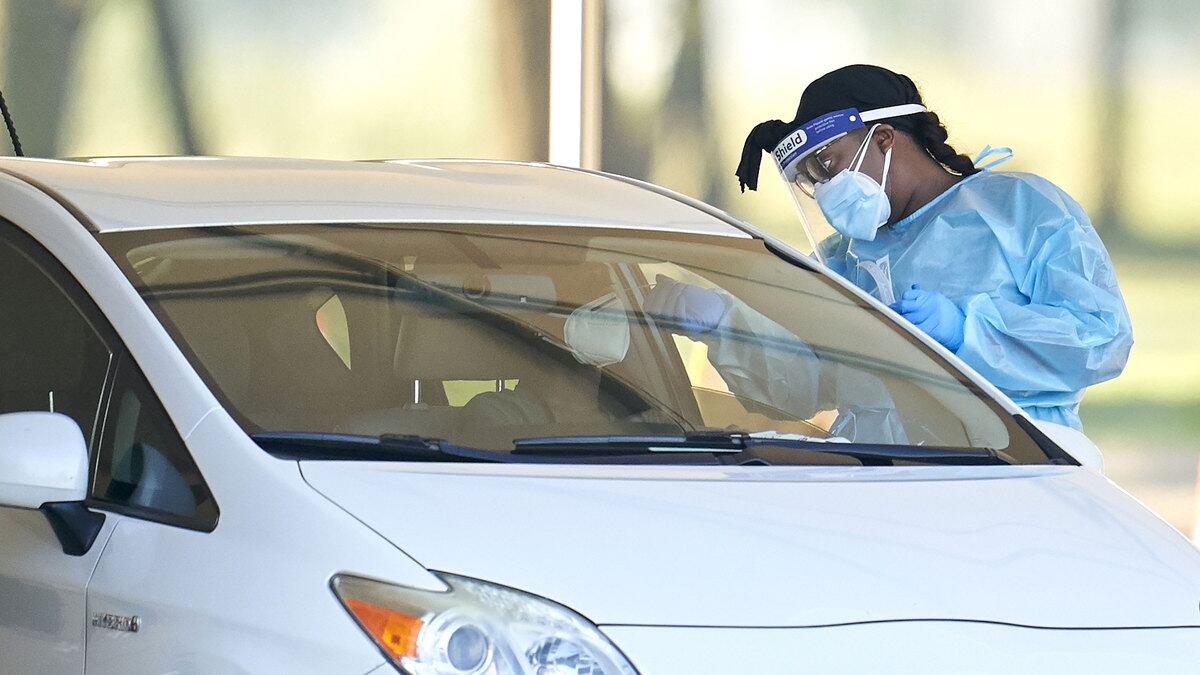The U.S. federal government is about to spend nearly a billion dollars buying a whole lot of new COVID-19 test kits.
But the kits, antigen tests from Abbott Laboratories, aren’t perfect—and neither is their manufacturer’s track record. There’s also the prospect that this kind of test, which at least one state health department has previously used to isolate “probable” cases from “confirmed” ones, could be used to dilute the number of COVID-19 cases reported across America.
Welcome to Rabbit Hole, where we dive deep on the biggest story. It’s for Beast Inside members only. Join up today.
ADVERTISEMENT
Still, more testing in a country where disease surveillance remains weak and testing woes are endemic is a good thing, experts told The Daily Beast.
“We won’t know more until the test is widely distributed, but to me this seems like a real accomplishment to celebrate,” Dave O’Connor, a professor of pathology and laboratory medicine at the University of Wisconsin-Madison, told The Daily Beast.
“We definitely need more rapid and easy-to-use tests for COVID-19 detection,” added Jeffrey Klausner, a professor of medicine and public health at UCLA who previously worked at the Centers for Disease Control.
On Thursday, the Trump administration announced that the United States would spend $750 million to acquire 150 million BinaxNOW antigen tests from Abbott, based in Chicago.
"This is a major development that will help our country to remain open, get Americans back to work and kids back to school," White House spokesperson Alyssa Farah told Politico.
An antigen test can detect certain proteins that are unique to a particular virus. Antigen tests aren’t the most sensitive tests, but they’re fast. Where a reverse transcription polymerase chain reaction test, or RT-PCR test—the most common diagnostic test, usually achieved via nasal swab—is highly sensitive, it also requires a sophisticated laboratory for processing. That can take hours, days, or even weeks.
BinaxNOW is pitched as taking just 15 minutes. You use a swab to collect a sample, slip it into a postcard-size tester, and wait for a reactive strip to change color.
Blue means you’re probably infected.
“BinaxNOW is a fast, reliable, affordable, and portable rapid test that Abbott will produce at mass scale to greatly expand access to testing to people who need it,” the company states on its website.
The U.S. Food and Drug Administration approved BinaxNOW for emergency use on Wednesday. The White House reportedly plans to send the tests to nursing homes, schools, and vulnerable communities that are currently under-tested. Still, as The Atlantic reported, the nature of the FDA authorization suggests the test is not intended for preemptive screening so much as identifying active cases.
Neither traditional diagnostic tests nor antigen tests are foolproof. “Both test types can give false negatives,” Al Edwards, a professor of biomedical technology at the University of Reading in the United Kingdom, told The Daily Beast.
Poor sensitivity also doomed an earlier, 13-minute diagnostic test from Abbott Laboratories that the FDA approved for emergency use in March. President Donald Trump even touted the test on the White House lawn.
Some users were disappointed. The Cleveland Clinic told NPR the earlier Abbott test delivered a false negative nearly one time out of six. In April, the FDA issued revised instructions for the Abbott test that the agency hoped would improve the test’s sensitivity.
And in at least one state, government officials cited the comparative insensitivity of antigen tests to whittle down public health data. In mid-July, health officials in Texas quietly removed thousands of COVID-19 cases from the official state total.
The 3,484 removed cases were diagnosed using FDA-approved antigen tests. But state health officials pointed to the definition of a coronavirus case the U.S. Centers for Disease Control and Prevention published in early April to explain why the cases were removed.
Under that definition, the CDC only considered cases “confirmed” if they were diagnosed using a PCR test. Cases that were detected using antigen tests were classified as “probable.” If someone was diagnosed with an antigen test, Texas refused to count their case among the state total.
The CDC has updated its guidance. PCR tests are still the “gold standard,” the CDC explained. But antigen tests can be valid, too. “Clinicians should understand antigen test performance characteristics in order to recognize potentially false negative or false positive results and to guide patient management,” the CDC recommended.
BinaxNOW apparently is more sensitive than the older Abbott test and helps to close the sensitivity gap between the antigen and PCR testing methods. “From the data I’ve seen, the new antigen test from Abbott performs well—not as good as the laboratory-based PCR tests, but that’s not the point,” Keith Jerome, a University of Washington virologist, told The Daily Beast.
If there’s a downside to the antigen tests, it’s that they might reinforce the false idea that the United States can “test its way to normal,” in the words of Susan Butler-Wu, a clinical microbiologist at the University of Southern California.
“People are thinking, test so I can go about my business,” Butler-Wu told The Daily Beast. But that’s naive.
Tests produce information. But the information is useless if people don’t take action. Once someone knows they’re infected, they need to quarantine themselves—and encourage anyone they’ve come into close contact recently to get tested, too.
Schools that confirm pockets of infections among students or staff should change their teaching strategies. Nursing homes with COVID cases need to isolate infected residents and limit visitors.
“All tests have to be used as a carefully managed part of a bigger public health strategy,” Edwards said.






